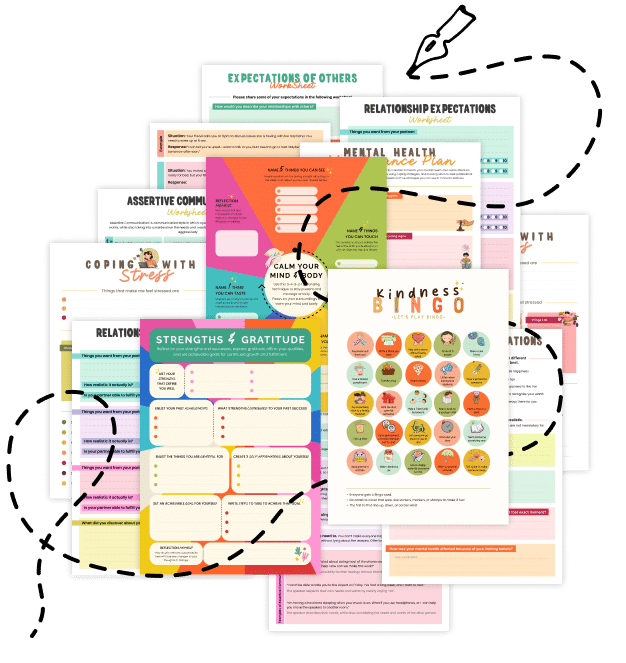20 Things You Should Know About Relational Frame Theory
Explore Relational Frame Theory—a groundbreaking behavioral approach to language and cognition. Discover 20 essential insights into RFT’s principles, practical applications in therapy, and everyday implications for understanding thought and communication.
1. What Is Relational Frame Theory?
Relational Frame Theory (RFT) is a behavioral theory of language and cognition that explains how humans learn to relate stimuli arbitrarily. It posits that our ability to create connections—such as “same as,” “different from,” or “more than”—forms the foundation of complex thought and language.
2. The Roots in Behavior Analysis
Developed by Steven Hayes, Dermot Barnes-Holmes, and colleagues, Relational Frame Theory (RFT) builds on principles of operant conditioning. It extends traditional behavior analysis by explaining how we learn symbolic relations through interactions with our environment.
3. Relational Frames Explained
A relational frame is a learned pattern of relating stimuli that goes beyond simple associations. For example, learning that “A is greater than B” and “B is greater than C” allows you to infer that “A is greater than C.”
4. Mutual Entailment
RFT suggests that once a relation is learned, it automatically implies a mutual connection. For instance, if you learn that “A is taller than B,” you also implicitly understand that “B is shorter than A.”
5. Combinatorial Entailment
This concept refers to how multiple relational frames can combine to form new, untrained relations. It explains how we can derive complex ideas by linking simpler relational patterns, a key process in creative thinking.
6. Transformation of Stimulus Functions
One fascinating aspect of Relational Frame Theory (RFT) is that the function of a stimulus can change based on its relations to other stimuli. For example, a word or symbol might evoke different feelings depending on the context of related words.
7. Language as a Relational Network
RFT argues that language is a network of relational frames. Every time you use metaphors, analogies, or comparisons, you’re engaging in relational framing—linking words and ideas in meaningful ways.
8. Implications for Cognitive Flexibility
Because RFT highlights the arbitrary nature of learned relations, it underscores the flexibility of human cognition. This flexibility is key to problem-solving, creativity, and adapting to new situations.
9. Application in Acceptance and Commitment Therapy (ACT)
RFT is a theoretical backbone of Acceptance and Commitment Therapy (ACT). It helps explain how language can both empower and constrain us, guiding techniques to defuse unhelpful thought patterns and promote psychological flexibility.
10. Breaking Fixed Patterns
By understanding relational frames, you can identify when your thinking is too rigid. For example, challenging fixed “rules” about yourself or situations can open up new ways of relating to your experiences.
11. Practical Exercise: Relational Mapping
Try creating a visual map of related ideas. Write down a concept and draw lines connecting it to related ideas (e.g., causes, effects, opposites). This exercise helps make abstract relational frames more concrete.
12. Enhancing Communication
Recognizing relational frames in everyday language can improve your communication skills. Being aware of how words are linked helps you choose language that’s clear, precise, and supportive of mutual understanding.
13. Cultural Influences on Relational Framing
Different cultures may emphasize distinct relational frames—what’s considered “normal” or “desirable” can vary. This perspective helps explain cross-cultural differences in communication, values, and behavior.
14. Educational Applications
Teachers can use Relational Frame Theory (RFT) principles to design lessons that help students build robust, interconnected knowledge networks. Encouraging students to make connections between topics can improve retention and critical thinking.
15. The Role of Context
The meaning of any relational frame can shift depending on context. For example, the word “big” might refer to size, importance, or emotional intensity depending on how it’s used. Understanding context is crucial in applying Relational Frame Theory (RFT).
16. Enhancing Problem-Solving Skills
By practicing relational framing, you can learn to see problems from multiple perspectives. This can lead to more innovative solutions as you connect seemingly unrelated concepts in new ways.
17. Tools and Techniques
Digital tools like mind-mapping software can facilitate relational framing. They help you create dynamic, visual networks of ideas that evolve as you add new connections—making abstract concepts more tangible.
18. Self-Awareness and Metacognition
Reflecting on your own relational frames can lead to greater metacognitive awareness. By examining how you form and adjust relations among ideas, you can fine-tune your learning and decision-making processes.
19. Research and Ongoing Studies
Relational Frame Theory (RFT) continues to evolve as a field of study. Ongoing research explores how relational framing impacts everything from emotional regulation to creative thinking, offering insights into the very nature of human cognition.
20. Related Topics to Explore
- Cognitive Defusion: Techniques to detach from rigid language patterns that may limit creativity.
- Self-Talk Restructuring: Reframing internal dialogue to support a more flexible, positive outlook.
- Mind-Wandering Mode: How spontaneous thought can generate new relational frames.
- Active Recall: Enhancing memory by actively linking and retrieving information.
Quick Tips for Applying RFT in Daily Life
- Practice Relational Mapping: Regularly sketch out how your ideas connect.
- Challenge Fixed Beliefs: When you catch yourself thinking rigidly, ask what alternative relations might exist.
- Enhance Your Vocabulary: Expanding your language can help you form more nuanced relational frames.
- Engage in Reflective Dialogue: Discuss your thoughts with others to see new relational perspectives.
- Use Mind Maps: Leverage digital or paper-based mind maps to visualize your knowledge networks.
Relational Frame Theory provides a powerful framework for understanding how language and thought interconnect. By recognizing and harnessing the power of relational frames, you can enhance your communication, boost problem-solving skills, and foster greater cognitive flexibility. Whether you’re applying these principles in therapy, education, or daily self-reflection, RFT offers a dynamic lens through which to view and transform your inner world.
Share this article with anyone interested in deepening their understanding of how language shapes thought. Embrace the insights of Relational Frame Theory, and discover a richer, more interconnected way of thinking about the world around you!

